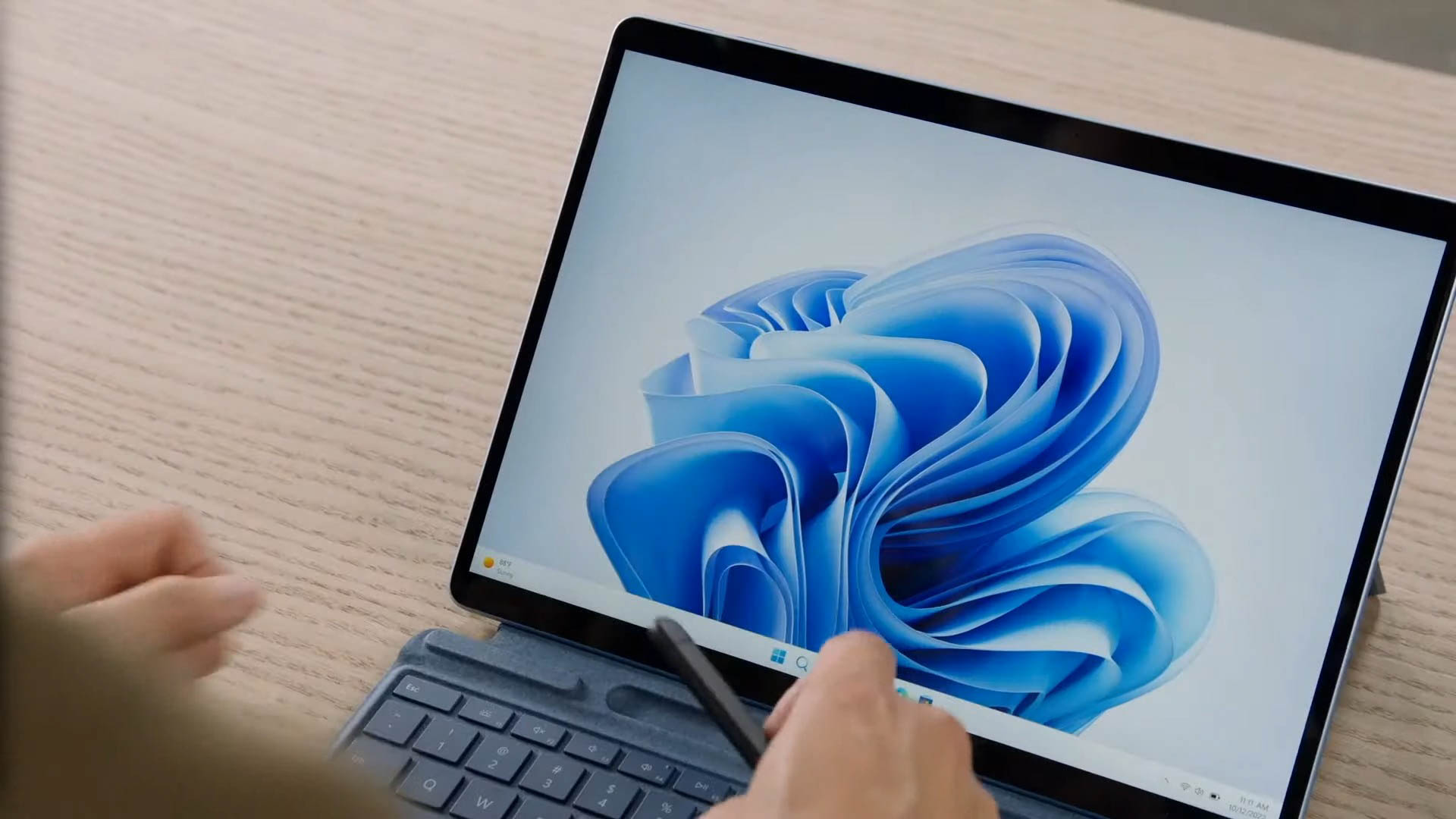Laptop Mag Verdict
The Samsung Notebook 7 Spin is a flexible 2-in-1 with a solid display, but poor battery life and an uninspired design hold it back.
Pros
- +
Crisp display
- +
Flexible 2-in-1 design
- +
Comfortable keyboard
- +
Runs cool
Cons
- -
Below-average battery life
- -
Ho-hum looks
- -
Short on ports
- -
Poor webcam
- -
Wonky touchpad
Why you can trust Laptop Mag
Samsung's laptop business is spiralling toward irrelevance, and drastic changes are needed to put it back on the map. The 13-inch Notebook 7 Spin isn't a savior, but it's a decent option for anyone in the market for a sub-$1,000 2-in-1 with midtier specs.
The convertible laptop has a detailed display and a snappy keyboard, and it stays cool under a heavy workload. Unfortunately, its bland design, disappointing battery life and poor webcam give us pause about recommending it ahead of similarly priced 2-in-1s.
Design
If Samsung is going to compete with its rivals, it needs to take risks. The Notebook 7 Spin isn't one. The 2-in-1's design is so basic that it could be used as a blueprint for a laptop emoji -- a representation of an ordinary notebook, lacking any unique characteristics.
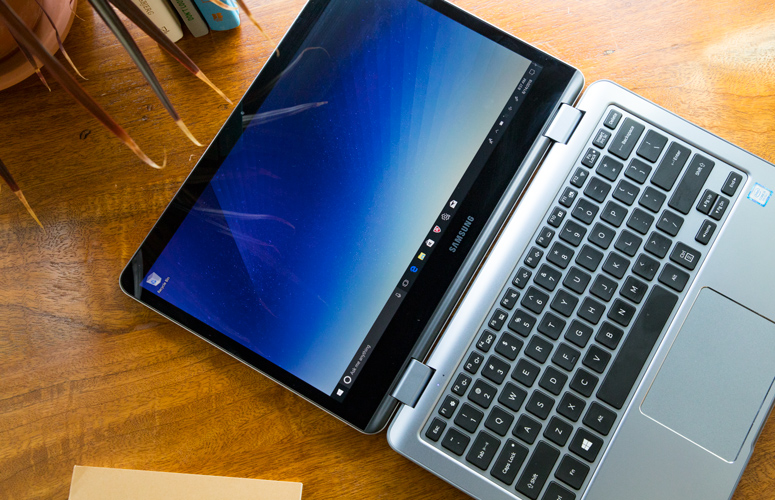
The silver laptop has a smooth plastic chassis, black keyboard keys and an offset chrome Samsung logo on the lid. There are a few positives to note, like the 7 Spin's pleasantly curved edges, which are a welcome departure from the aggressive angles we see on other devices. The chrome trim around the touchpad is also a nice addition.
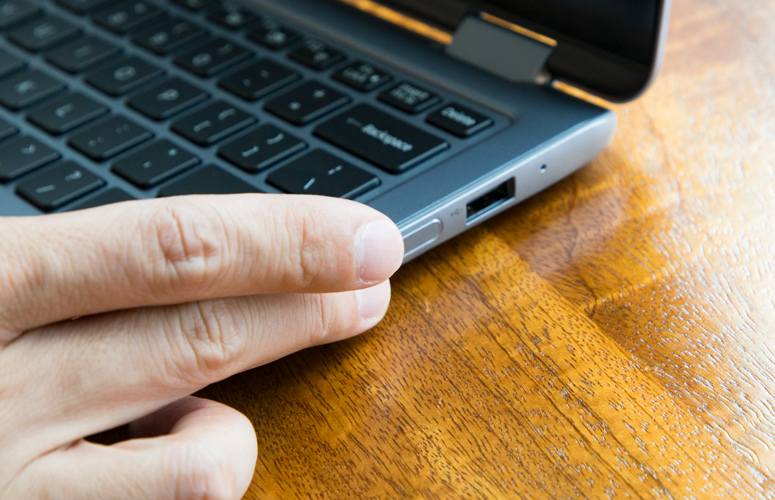
Unfortunately, the Notebook 7 Spin has thick bezels bordering its display, and the fingerprint sensor/power button on the side is very sensitive.
The Notebook 7 Spin is so basic that it could be used as a blueprint for a laptop emoji -- a representation of an ordinary notebook, lacking any unique characteristics.
There isn't much else to say about the Notebook 7 Spin's looks. In fact, its flexible hinges, which enable tablet and tent mode, are the only unique element separating it from the designs of budget devices. That's a shame, because Samsung has released some truly gorgeous laptops over the years.
MORE: Laptops with the Best Overall Performance
Continuing the trend of mediocrity, the 3.2-pound Notebook 7 Spin isn't heavy or light compared to other 13-inch 2-in-1s. The Lenovo Yoga 730 weighs just 2.7 pounds, while the Acer Spin 5 is a bit heavier, at 3.4 pounds. This Samsung isn't notably thin, either. At 12.4 x 8.5 x 0.7 inches, the Notebook 7 Spin is larger than the Lenovo Yoga 730 (11.5 x 8 x 0.6 inches) but more compact than the Acer Spin 5 (12.8 x 8.9 x 0.6 inches).
Ports
I wish Samsung had added more ports on the Notebook 7 Spin and updated the few it does have.
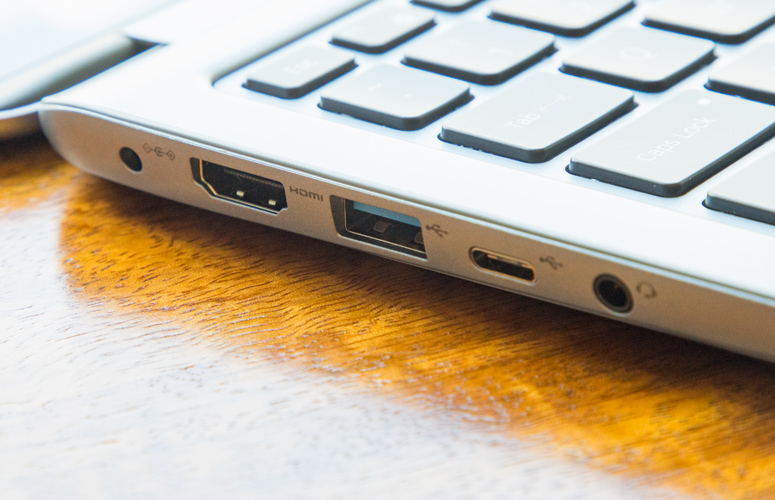
There is a dated USB 2.0 port on the right side of the laptop, while the left side contains a headphone/mic combo jack, a USB 3.1 Type-C port, a USB 3.0 Type-A port and an HDMI connector.
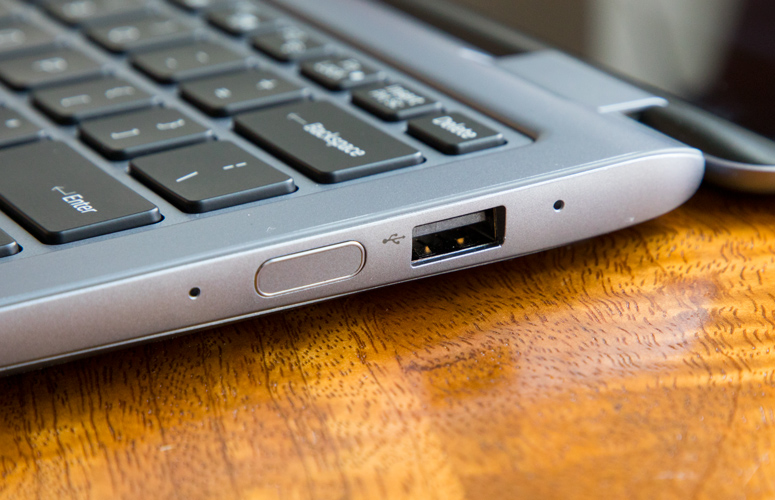
For its size and price, the Notebook 7 Spin should really include a card reader or a Thunderbolt 3 port.
Display
Samsung has a knack for making devices with great displays, and the Notebook 7 Spin is no exception.
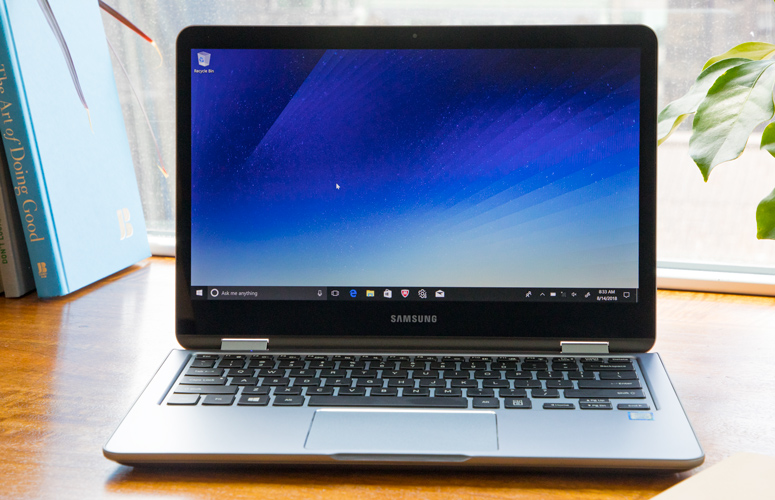
The 13-inch, 1080p display showed an exceptional amount of detail when I watched a trailer for the upcoming biographical-drama film First Man. When Ryan Gosling gets launched out of a flight simulator, I could make out the creases in his white pants as his legs flailed desperately ahead of him.
I could even see the dirt that accumulated on the back of his helmet after he turned his head to look at the eruption behind him.
The 13-inch 1080p display showed an exceptional amount of detail when I watched a trailer for the upcoming biographical-drama film First Man.
The display also has good color reproduction and accurate white balance. When I watched a trailer for the upcoming DC superhero movie Aquaman, the panel brought out the browns and yellows in Jason Momoa's flowing hair. In a fight scene, the contrast in color between the bright orange explosions and deep blue water was mesmerizing. When I visited my favorite news sites, their backgrounds were a clean white.
The Notebook 7 Spin's display did well in our lab tests, but competitors' displays are even better. The laptop can reproduce a solid 108.6 percent of the sRGB color gamut. That's slightly less than what the Lenovo Yoga 730 (118 nits) and Acer Spin 5 (126 nits) produced, and less than the premium laptop category average (110 nits).
MORE: Laptops with the Best Display Brightness
The same goes for display brightness. The Notebook 7 Spin reached 280 nits of maximum brightness. That's a good result, but below the Yoga 730's showing (282 nits) and the premium laptop average (307 nits). The Acer Spin 5's display is dimmer, at 274 nits.
Keyboard and Touchpad
With full-size keys and adequate spacing, the keyboard on the Notebook 7 Spin is comfortable to use. Unfortunately, key travel is a bit shallow, at just 1.2 millimeters (we prefer 1.5mm to 2mm), and the force required to register a keystroke is on the low side (64 grams).
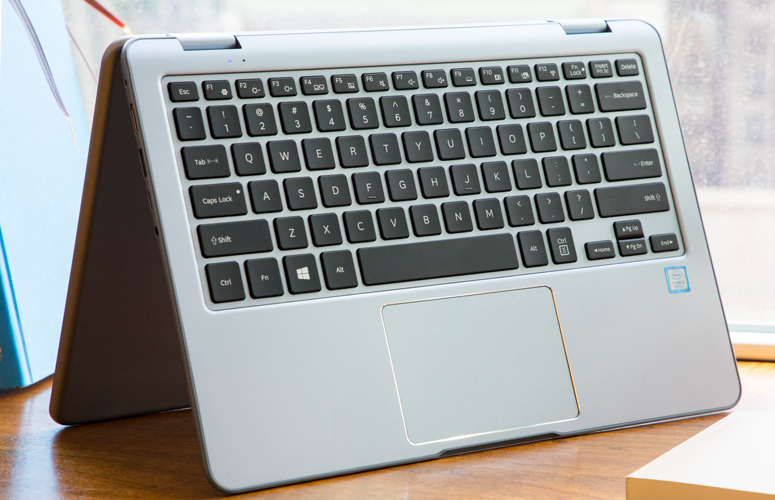
Still, the keyboard is very good overall. The keys feel snappy, and there is a pleasant audible bump that provides a good amount of tactile feedback. On the 10fastfingers.com typing test, I hit 108 words per minute with an accuracy of 95.6 percent. That's right around my average of 109 wpm with a 5 percent error rate.
The 3.9 x 2.6-inch touchpad is smooth and responsive. I had no problems executing pinch-to-zoom or scrolling gestures. However, short, quick swipes caused the cursor to jump a few pixels. A replacement unit sent by Samsung exhibited the same problems. The wonky touchpad isn't a deal breaker, but it made browsing the web aggravating at times.
Audio
The Notebook 7 Spin's speakers are passable. They get loud enough to fill a medium-size room, but the sound they output is hollow and lifeless. When I listened to Anthony Green's "You'll be Fine," the musician's piercing falsettos sounded distant, as if I were hearing him through a wall. The drums didn't have any weight, either.
MORE: The Best Headsets for Immersive Gaming
When I listened to Death Cab for Cutie's new single, "Autumn Love," Ben Gibbard's vocals were clear, but they, again, sounded far away. The speakers did a better job handling the soft, smooth voice of Ben Howard when I listened to "Oats in the Water," but the lack of energy in the guitar during the crescendo made me lose interest by the time the climax hit.
Performance
Equipped with a Core i5-8250U, 8GB of RAM and a 256GB SSD, the Notebook 7 Spin shouldn't have issues performing everyday tasks, like loading multiple web pages or playing high-resolution videos. I put it through the ringer, and it didn't stutter once when loading 15 Chrome tabs, an Excel document and five web pages on Microsoft Edge. Nor did the Notebook 7 Spin lag when I played two YouTube videos and a Twitch stream at 1080p resolution.
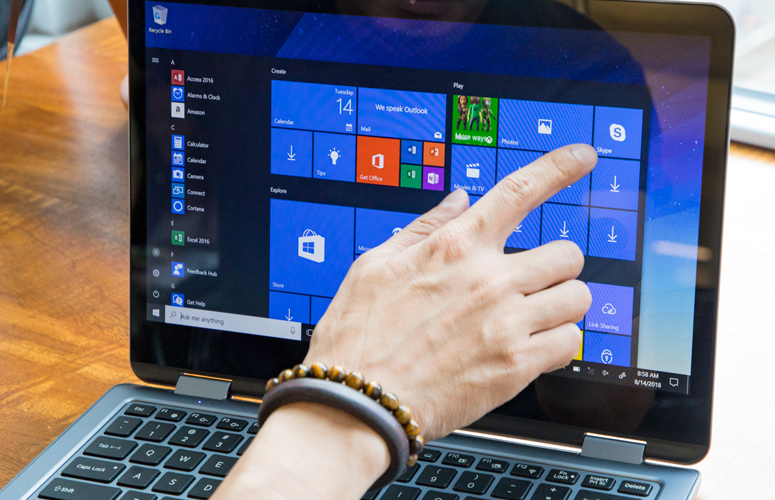
Having said that, the Notebook 7 Spin can't keep up with its competitors. On the Geekbench 4.1 overall performance test, the Notebook 7 Spin scored 11,374. That is lower than the scores from the Lenovo Yoga 730 (13,750) and the Acer Spin 5 (12,265), two similarly priced laptops with i5-8250U CPUs. Only the Lenovo topped the premium laptop category average (13,657).
Samsung makes some of the quickest hard drives on the market, but the Notebook 7's 256GB SSD took a leisurely 42 seconds to duplicate 4.97GB of files, for a rate of 121.2 megabytes per second. The Acer Spin 5 was faster, at 181.7 MBps, while the Lenovo Yoga 730's superquick SSD hit a rate of 299 MBps.
During the Excel spreadsheet test, the Notebook 7 Spin matched 65,000 names with their corresponding addresses in 1 minute and 33 seconds. That's a few seconds longer than the Spin 5's time (1:26) and the premium laptop average (1:30). The Lenovo Yoga 730 blazed through the task in 1:10.
The Notebook 7 Spin did better with the demanding HandBrake test, which involves converting a video from 4K to 1080p. The Samsung device took 22 minutes and 3 seconds to complete the task, which is quicker than the Acer Spin 5's time (22:12) and the category average (20:51). The Lenovo Yoga 730 also took this round, with a speedy time of 11:59.
MORE: Best Hard Drive Speed
The integrated Intel UHD Graphics 620 GPU in the Notebook 7 Spin is powerful enough only for lightweight games at lower settings. It struggled with our 1080p Dirt 3 benchmark, playing the racing game at 36.1 frames per second. That's slightly above our playability threshold of 30 fps, but nowhere near as smooth as the Lenovo Yoga 730 (66 fps) or Acer Spin 5 (52 fps), or the premium laptop average (71 fps).
Battery Life
Unfortunately, the Samsung Notebook 7 Spin doesn't last long on a charge. It endured for only 6 hours and 36 minutes on the Laptop Mag Battery Test, which involves continuous web surfing over Wi-Fi at 150 nits of brightness. The Lenovo Yoga 730 (7:00) and Acer Spin 5 (7:15) didn't impress either, but they did outlast the Samsung. The average battery life for premium laptops is 8 hours and 22 minutes.
Webcam
The Notebook 7 Spin's VGA (480p) webcam ranges from unexceptional to dismal depending on how bright your room is. Its picture was terrible under the soft lighting in our office. My face looked like an impressionist painting: blotchy, unclear and devoid of detail. Most of those problems disappeared when I captured an image of myself under direct sunlight, but the selfie cam smeared individual strands of my hair into a dark blob.
Heat
The Samsung Notebook 7 Spin stayed remarkably cool during our testing. The hottest location on the laptop, the underside, reached 91 degrees Fahrenheit after we played a full-screen HD YouTube video for 15 minutes. That is well below our 95-degree comfort threshold. The touchpad reached only 79 degrees, and the center of the keyboard hit 86 degrees.
Software and Warranty
The Notebook 7 Spin has a healthy dose of Samsung bloatware preinstalled on Windows 10 Home. If you've owned a Galaxy smartphone, you'll be familiar with some of the apps, like Samsung Messages and Samsung Gallery. Also among the mound of Samsung-branded apps are Samsung PC Cleaner, Samsung Recovery, Samsung Settings and Samsung Update.
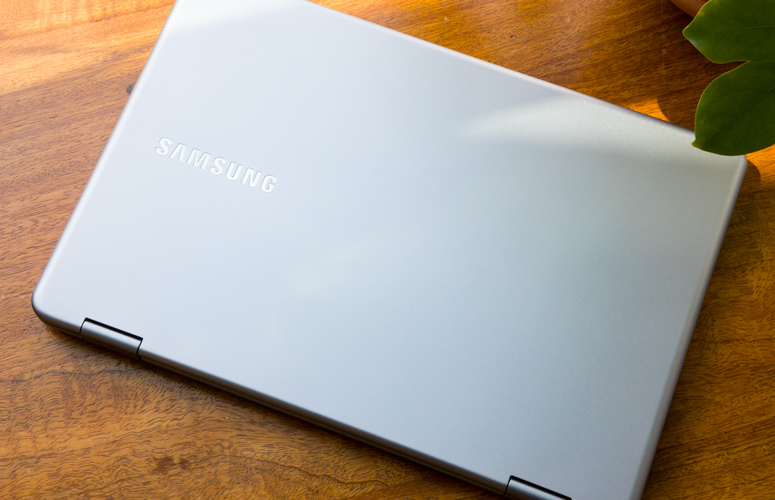
But wait, there's more. A separate Samsung folder includes security software, a user manual, a voice-recording app and a Wi-Fi cam app that lets you view your smartphone camera on your PC.
You will also encounter the standard fare of Windows bloatware, including the Candy Crush games, Disney Magic Kingdoms, Amazon, Netflix and Minecraft.
If you don't want some of this junk, try using Samsung PC Cleaner, which is essentially bloatware that helps get rid of bloatware.
MORE: Longest Battery Life Laptops
The Samsung Notebook 7 Spin ships with a one-year limited warranty. See how Samsung fared in our Tech Support Showdown and Best and Worst Brands ranking.
Configurations
The 13-inch Samsung Notebook 7 Spin comes in a single configuration, with an Intel Core i5-8250U CPU, 8GB of RAM and a 256GB SSD.
Bottom Line
The Samsung Notebook 7 Spin is a decent laptop, with a flexible 2-in-1 design, good keyboard and bright 1080p display. But at $899, it doesn't compare well against similar laptops, which feel more premium, have longer battery life and offer a better selection of ports.
If you're looking for a sub-$1,000 2-in-1, we suggest the Acer Spin 5. Like the Notebook 7 Spin, it has a bright display and comfortable keyboard, but it separates itself with slightly longer battery life, a metal chassis and a lower price.
For those who don't need a touch screen, the Asus ZenBook UX330UA is our 13-inch Ultrabook of choice. It has all-day battery life, a stylish aluminum-alloy chassis and a bright, colorful display. Best of all, it costs just $749 for the same specs as the Samsung.
Overall, the Samsung Notebook 7 Spin is a solid laptop, but there are better options out there.
Credit: Laptop Mag
Samsung Notebook 7 Spin Specs
| Bluetooth | Bluetooth 4.1 |
| Brand | Samsung |
| CPU | Intel Core i5-8250U |
| Company Website | http://www.samsung.com/ |
| Display Size | 13.3 |
| Graphics Card | Intel Core i5-8250U |
| Hard Drive Size | 256GB |
| Hard Drive Type | SATA3 SSD |
| Highest Available Resolution | 1920 x 1080 |
| Native Resolution | 1920x1080 |
| Operating System | Windows 10 Home |
| Ports (excluding USB) | Combo Headphone/Mic Jack, HDMI, USB 2.0 Always-On, USB 3.0, USB 3.1 with Type-C |
| RAM | 8GB |
| Size | 12.4 x 8.5 x 0.7 inches |
| Touchpad Size | 3.9 x 2.6 inches |
| USB Ports | 3 |
| Warranty/Support | 1-year warranty |
| Weight | 3.2 |
| Wi-Fi | 802.11ac |
| Wi-Fi Model | Qualcomm Atheros QCA9277 |
Phillip Tracy is the assistant managing editor at Laptop Mag where he reviews laptops, phones and other gadgets while covering the latest industry news. After graduating with a journalism degree from the University of Texas at Austin, Phillip became a tech reporter at the Daily Dot. There, he wrote reviews for a range of gadgets and covered everything from social media trends to cybersecurity. Prior to that, he wrote for RCR Wireless News covering 5G and IoT. When he's not tinkering with devices, you can find Phillip playing video games, reading, traveling or watching soccer.

